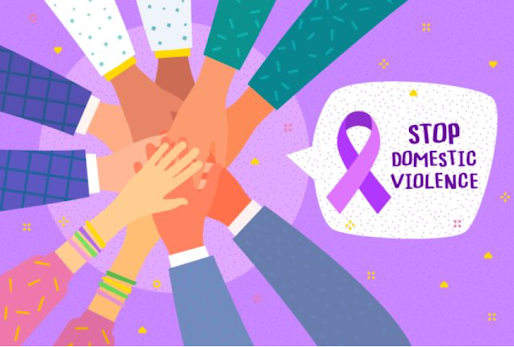By Rosabel Zohfeld, APRN, MSN-Ed, FNP-C
Sleep, an essential pillar of human health and well-being, has increasingly eluded many in our fast-paced, digitally connected world. Insomnia, the inability to fall or stay asleep, is a prevalent yet often overlooked condition affecting a substantial portion of the population. As we shed light on this often underestimated issue, we must recognize the profound impact of insomnia on individuals and society.
Insomnia is more than just the occasional restless night; it's a persistent condition that disrupts the natural sleep cycle, leaving individuals tired, irritable, and impaired daily. The toll it takes on one's physical, mental, and emotional well-being cannot be understated. Chronic insomnia is linked to risks of developing various health issues, including cardiovascular diseases, diabetes, depression, anxiety disorders, and compromised immune function.
In our modern world, where the demands of work, technology, and personal responsibilities often infringe upon the sanctity of rest, insomnia has become a pervasive problem. The ceaseless notifications on our screens, the ever-urgent emails, and the demands of a competitive society often conspire against a good night's sleep. Our 24/7 society has blurred the boundaries between day and night, making it difficult for individuals to establish healthy sleep routines.
Furthermore, the prolonged uncertainty and disruptions of the pandemic have exacerbated sleep disorders, including insomnia. Heightened stress levels, financial concerns, social isolation, and health anxieties have all contributed to sleeplessness. Insomnia isn't just borne by those who experience it directly; it extends to families, workplaces, and communities.
Addressing insomnia requires a multi-faceted approach. First and foremost, raising awareness about the gravity of insomnia and its consequences is crucial. Education and public discourse can help dispel misconceptions, reduce stigma, and encourage individuals to seek timely help.
Moreover, prioritizing self-care and establishing healthy sleep habits are essential. A few behaviors can help improve our sleep quality. These healthy behaviors include creating a conducive sleep environment, maintaining a regular schedule, reducing screen time before bed, and engaging in relaxation techniques. Employers should also promote a healthy work-life balance, discourage after-hours emails, and foster a culture that values and supports well-being.
Access to adequate and affordable healthcare for people with insomnia is also pivotal. Tailored treatment plans, which may involve cognitive-behavioral therapy for insomnia (CBT-I) or pharmacological interventions when necessary, should be accessible to all who need them. Insurance coverage and mental health support should be inclusive and readily available.
In creating a set of practices and habits promoting good, restorative sleep, we refer to sleep hygiene. These various behavioral and environmental factors can influence the quality and duration of our sleep.
Let us discuss some critical aspects of sleep hygiene:
- Consistent Sleep Schedule: Going to bed and waking up at the same time every day, even on weekends. This helps regulate the body's internal clock (circadian rhythm).
- Create a Relaxing Bedtime Routine: Establish a pre-sleep routine that signals to the body that it's time to wind down. Activities include reading a book, listening to soft music, gentle stretching, and meditation before bed.
- Comfortable Sleep Environment: Keep the bedroom cool, dark, and quiet to promote better sleep. Use blackout curtains, earplugs, or white noise machines as needed. Having a comfortable mattress and pillows that support the body well.
- Limit Exposure to Screens: Avoid screens (phones, computers, TVs) at least an hour before bedtime. It is known that the blue light emitted by digital screens can interfere with melatonin production, a hormone that regulates sleep.
- Mind Your Diet and Hydration: Heavy meals, caffeine, and nicotine close to bedtime should be avoided before bedtime, as they can disrupt sleep. Opt for a light, healthy snack if you're hungry before bed. Stay hydrated throughout the day, but reduce liquids close to bedtime to minimize nighttime awakenings for bathroom visits.
- Regular Exercise: Have a normal exercise routine with regular physical activity during the day, but avoid intense workouts close to bedtime. Exercise can help us fall asleep faster.
- Manage Stress and Anxiety: Deep breathing, meditation, or any other technique, such as progressive muscle relaxation, can be beneficial to reduce stress and calm the mind before bedtime. Consider keeping a worry journal to jot down any anxieties or concerns, allowing you to clear your mind before sleep.
- Limit Daytime Naps: Naps should be short (20-30 minutes). Avoid naps late in the afternoon or evening, as it can interfere with nighttime sleep.
- Expose Yourself to Natural Light: Get exposure to natural light during the day, especially in the morning. Natural light helps regulate the circadian rhythm and improve sleep quality.
Implementing these sleep hygiene practices can significantly improve sleep quality and overall well-being. If sleep problems persist, consulting a healthcare professional for further evaluation and guidance should be considered.
In conclusion, insomnia is a pressing public health concern that demands our attention. By acknowledging its impact and taking proactive steps to mitigate its effects, we can pave the way for a society that values and prioritizes good sleep. Let us unite in advocating for better sleep hygiene, encouraging open dialogues about mental health, and working towards a world where the tranquility of a restful night is no longer an elusive dream.







